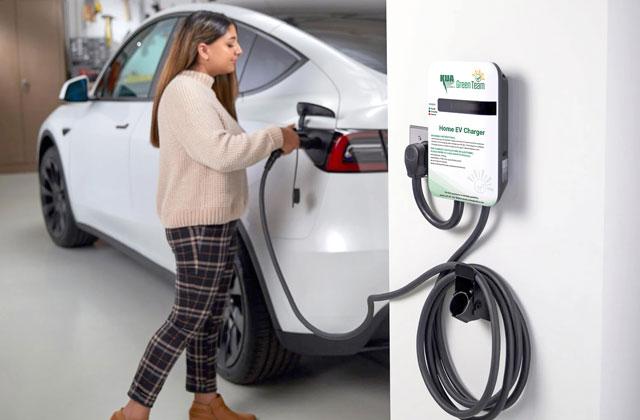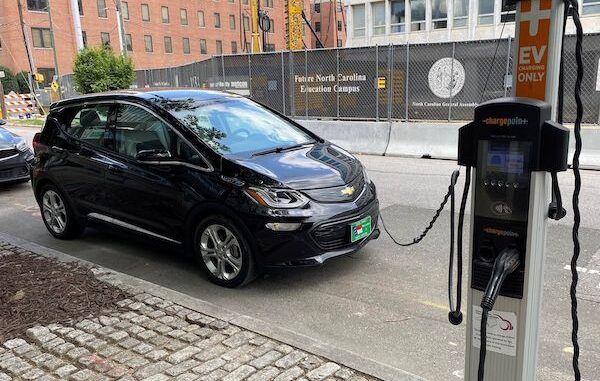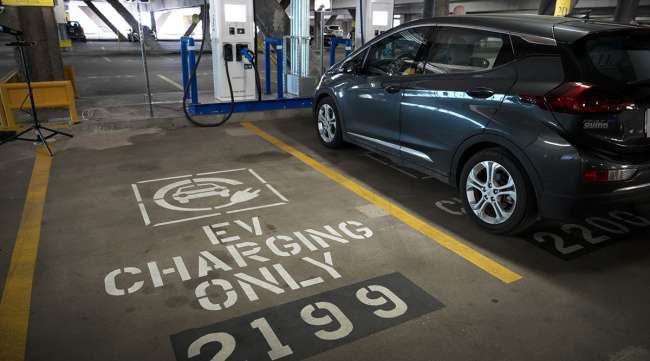The Future of Electric Vehicles and Why You Should Buy EV Charging news Now
The Future of Electric Vehicles and Why You Should Buy EV Charging news Now
Blog Article
Leading EV Charging News: Key Updates on Facilities and Development

Current Developments in Fast-Charging Innovation

Furthermore, developments in battery technology, including boosted thermal management systems and higher power thickness batteries, complement fast-charging capabilities. These growths mitigate the danger of battery destruction during fast charging, making certain longevity and performance for EV proprietors.
In addition, the integration of wise billing remedies is enhancing individual experience, allowing real-time surveillance and vibrant pricing models. EV Charging news. This versatility enables vehicle drivers to maximize billing times and costs based on grid demand
As car manufacturers remain to spend in fast-charging networks, the partnership in between sector stakeholders is crucial. Partnerships between charging station suppliers and auto producers are leading the way for comprehensive protection, eventually promoting a much more robust EV community. These improvements are essential in supporting the shift to sustainable transportation.
Government Campaigns for Billing Growth
Government initiatives play a vital role in the expansion of electric automobile (EV) billing facilities, assisting in the shift to sustainable transportation. Numerous federal and state programs are being executed to enhance billing accessibility, reduce the financial worry on consumers, and promote the fostering of electrical cars.
Notably, the united state federal government has allocated significant financing with the Infrastructure Financial Investment and Jobs Act, which allocates $7.5 billion for EV charging network growth across the nation. This funding is targeted at releasing countless brand-new billing stations, particularly in underserved locations, consequently dealing with range anxiousness among possible EV buyers.
Additionally, numerous states are establishing regulations to streamline the allowing process for billing station installments, which is critical for speeding up release. Rewards such as tax obligation credit scores and discounts for both consumers and businesses are likewise being presented to motivate the installment of charging facilities.
Furthermore, public-private partnerships are significantly ending up being an emphasis, leveraging private investment to enhance government funding. These campaigns underscore a joint method crucial for building a efficient and extensive EV billing network, ultimately adding to a greener and even more lasting future.
Innovative Battery Solutions Enhancing Effectiveness
Reinventing the landscape of electrical car (EV) innovation, cutting-edge battery solutions are considerably improving performance and efficiency. Breakthroughs in battery chemistry, especially with lithium-sulfur and solid-state batteries, are causing raised power thickness, which enables longer ranges and faster charging times. These brand-new battery types have the potential to exceed standard lithium-ion batteries by using greater abilities while lowering weight, therefore boosting overall vehicle efficiency.
Moreover, developments in battery management systems (BMS) are optimizing power usage and prolonging battery life expectancy. Smart algorithms keep track of battery health and efficiency, allowing real-time changes to billing and releasing processes. This not only boosts the performance of the battery however also ensures an extra lasting and trustworthy power source for EVs.
Additionally, the integration of reusing innovations is dealing with the environmental influence of battery manufacturing and disposal. Advancements in second-life applications for EV batteries are facilitating their usage in power storage systems, adding to a round economic climate.
As these cutting-edge battery options remain to progress, they promise to change the EV market, making electrical lorries extra easily accessible and appealing to a broader target market while supporting global sustainability objectives.

Collaboration Between Automakers and Charging Networks
Recognizing the critical need for a durable billing infrastructure, car manufacturers are increasingly collaborating with billing network service providers to improve the EV ownership experience (EV Charging news). These partnerships aim to create a smooth billing ecological community that profits customers and supports the shift to electric vehicles
Significant auto brand names are signing up with forces with recognized billing networks to increase their charging station coverage, making certain vehicle drivers have accessibility to reputable and practical charging alternatives. As an example, partnerships with networks like ChargePoint and Electrify America allow car manufacturers to incorporate charging options straight right into their cars' navigating systems, assisting users to the nearest terminals and offering real-time schedule updates.
Moreover, these partnerships typically result in the growth of fast-charging innovations that significantly lower the time needed to reenergize an EV. By merging sources and knowledge, car manufacturers and charging networks can introduce faster, producing remedies that meet the growing need for electric flexibility.
In addition, joint efforts might additionally lead to even more standard charging protocols, which can ease consumer confusion and advertise more comprehensive EV adoption. Generally, these strategic alliances are critical in building a user-friendly and effective billing framework that satisfies the needs of an expanding electric automobile market.
Obstacles Facing EV Charging Facilities
As the electric car market proceeds to expand, numerous challenges are surfacing that hinder the advancement of a detailed charging facilities. One of the main challenges is the inadequate variety of billing terminals, especially in underserved and rural urban areas. This gap creates range anxiety among potential EV buyers, preventing them from making the button.
Furthermore, the lack of standardization in right here charging modern technology makes complex the infrastructure landscape. Variants in plug types and charging rates can create site confusion for users and raise operational complexities for billing network operators.
An additional pressing concern is the high expense linked with the installment and upkeep of charging terminals, which can be an obstacle for both exclusive services and public entities. Finally, governing obstacles and zoning constraints can delay the release of charging framework, hindering development in expanding crucial services. Dealing with these obstacles will be important for cultivating a durable EV community that supports the change to sustainable transportation.
Conclusion
To conclude, the recurring improvements in EV billing technology, supported by significant government initiatives and ingenious battery options, are vital for the growth and efficiency of electric car facilities. Partnerships between automakers and charging suppliers better boost terminal insurance coverage, read here resolving the expanding need for easily accessible billing choices. In spite of challenges that persist within the EV billing landscape, these growths represent a positive trajectory towards a more reliable and lasting electric vehicle ecosystem.
Innovations in billing framework have led to the development of ultra-fast battery chargers qualified of providing up to 350 kW of power, substantially lowering charging times. Variations in plug kinds and charging speeds can develop confusion for users and raise operational complexities for charging network drivers.In final thought, the ongoing innovations in EV billing technology, sustained by considerable federal government campaigns and cutting-edge battery options, are essential for the development and performance of electric car infrastructure. Cooperations between automakers and billing companies further improve terminal insurance coverage, attending to the growing need for accessible billing alternatives. In spite of obstacles that continue within the EV billing landscape, these advancements signify a positive trajectory in the direction of a more lasting and efficient electrical lorry ecosystem.
Report this page